- You are here:
- Countries & Parks
- Kenya Travel Guide
- Best Time To Visit


Kenya Travel Guide Kenya
- Parks & Reserves
- Weather & Climate
- Popular Routes
- Getting There
- Malaria & Vaccinations
Best Time To Visit – Kenya

Anthony is a renowned Africa expert and author of many Lonely Planet guidebooks, including the guide to Kenya.
Anthony is a renowned Africa expert and author of the Lonely Planet guide to Kenya.
Anthony is the author of the Lonely Planet guide to Kenya.
The best months for visiting Kenya (and the best time for wildlife viewing) are during the Dry season from June to October. The wildebeest migration usually reaches the Masai Mara in July or August and remains in Kenya throughout September. It starts moving back to Tanzania’s Serengeti National Park around October. Wildlife viewing is good year-round, but this can differ for some parks, depending on the rains. There is a dry spell between the rains in January and February that is also a great time to visit.
June to October – Dry Season
- Wildlife is easier to spot because the bush is thin and animals gather around water
- It's unlikely to rain – the days are sunny with clear skies
- There are fewer mosquitoes
- August to October are the best months to see the wildebeest migration
- It gets very busy and crowded in the most popular parks
Wildlife Photos

November to May – Wet Season
- The scenery is beautiful and green
- Rates drop because it's the low season
- Newborn animals can be seen
- Migratory birds are present from November to April
- Except for March to May, rains are usually just short showers in the afternoon
- During March to May the rains can be continuous
- Some lodges and camps close down during part of the Wet season

Best Time To Go by Major Park
The Masai Mara National Reserve offers great wildlife viewing throughout the year. In the peak of the rainy season, most other parks, especially in the highlands and along the coast, can be problematic with regards to heat, humidity and continuous rain. Some of the lodges and camps close as a result. The dry months offer quality wildlife viewing throughout Kenya.
- Amboseli National Park Amboseli National Park Excellent "> Jan J Excellent "> Feb F Good "> Mar M Fair "> Apr A Fair "> May M Excellent "> Jun J Excellent "> Jul J Excellent "> Aug A Excellent "> Sep S Excellent "> Oct O Fair "> Nov N Good "> Dec D
- Buffalo Springs NR Buffalo Springs National Reserve Excellent "> Jan J Excellent "> Feb F Good "> Mar M Fair "> Apr A Fair "> May M Excellent "> Jun J Excellent "> Jul J Excellent "> Aug A Excellent "> Sep S Good "> Oct O Fair "> Nov N Good "> Dec D
- Lake Nakuru National Park Lake Nakuru National Park Excellent "> Jan J Excellent "> Feb F Good "> Mar M Fair "> Apr A Fair "> May M Excellent "> Jun J Excellent "> Jul J Excellent "> Aug A Excellent "> Sep S Excellent "> Oct O Excellent "> Nov N Excellent "> Dec D
- Masai Mara NR Masai Mara National Reserve Good "> Jan J Good "> Feb F Fair "> Mar M Fair "> Apr A Good "> May M Excellent "> Jun J Excellent "> Jul J Excellent "> Aug A Excellent "> Sep S Excellent "> Oct O Fair "> Nov N Fair "> Dec D
- Samburu National Reserve Samburu National Reserve Excellent "> Jan J Excellent "> Feb F Good "> Mar M Fair "> Apr A Fair "> May M Excellent "> Jun J Excellent "> Jul J Excellent "> Aug A Excellent "> Sep S Good "> Oct O Fair "> Nov N Good "> Dec D
- Tsavo East National Park Tsavo East National Park Excellent "> Jan J Excellent "> Feb F Good "> Mar M Fair "> Apr A Fair "> May M Excellent "> Jun J Excellent "> Jul J Excellent "> Aug A Excellent "> Sep S Excellent "> Oct O Fair "> Nov N Good "> Dec D
- Tsavo West National Park Tsavo West National Park Excellent "> Jan J Excellent "> Feb F Good "> Mar M Fair "> Apr A Fair "> May M Excellent "> Jun J Excellent "> Jul J Excellent "> Aug A Excellent "> Sep S Excellent "> Oct O Fair "> Nov N Good "> Dec D
Want To Visit Kenya?
2,473 Kenya Safaris
- Kenya Family Safaris
- Kenya Camping Safaris
- Kenya Private Safaris
- Tour Operators for Kenya
Safari Tours to Kenya

3-Day Maasai Mara Eco Safari by Air
$1,595 to $2,035 pp (USD)
Kenya: Shared tour (max 7 people per vehicle) Mid-range Tented Camp
You Visit: Nairobi (Start) , Masai Mara NR, Nairobi (End)
WildLife Sun Safaris
5.0 /5 – 79 Reviews

5-Day Nakuru Naivasha Masai Mara Budget Tour
$550 to $785 pp (USD)
Kenya: Shared tour (max 8 people per vehicle) Budget Tented Camp & Hotel
You Visit: Nairobi (Start) , Lake Nakuru NP, Lake Naivasha (Naivasha) , Masai Mara NR, Nairobi (End)
Bienvenido Kenya Tours and Safaris
4.1 /5 – 73 Reviews

10-Day Safari & Beach Adventure
$2,481 to $3,328 pp (USD)
Kenya: Private tour Mid-range Lodge & Tented Camp
You Visit: Nairobi (Start) , Masai Mara NR, Lake Nakuru NP, Lake Naivasha (Naivasha) , Amboseli NP, Tsavo East NP, Diani Beach, Nairobi (End)
Kameraz of Afrika
4.8 /5 – 97 Reviews
When is the best time to visit Kenya?

Nov 17, 2023 • 7 min read
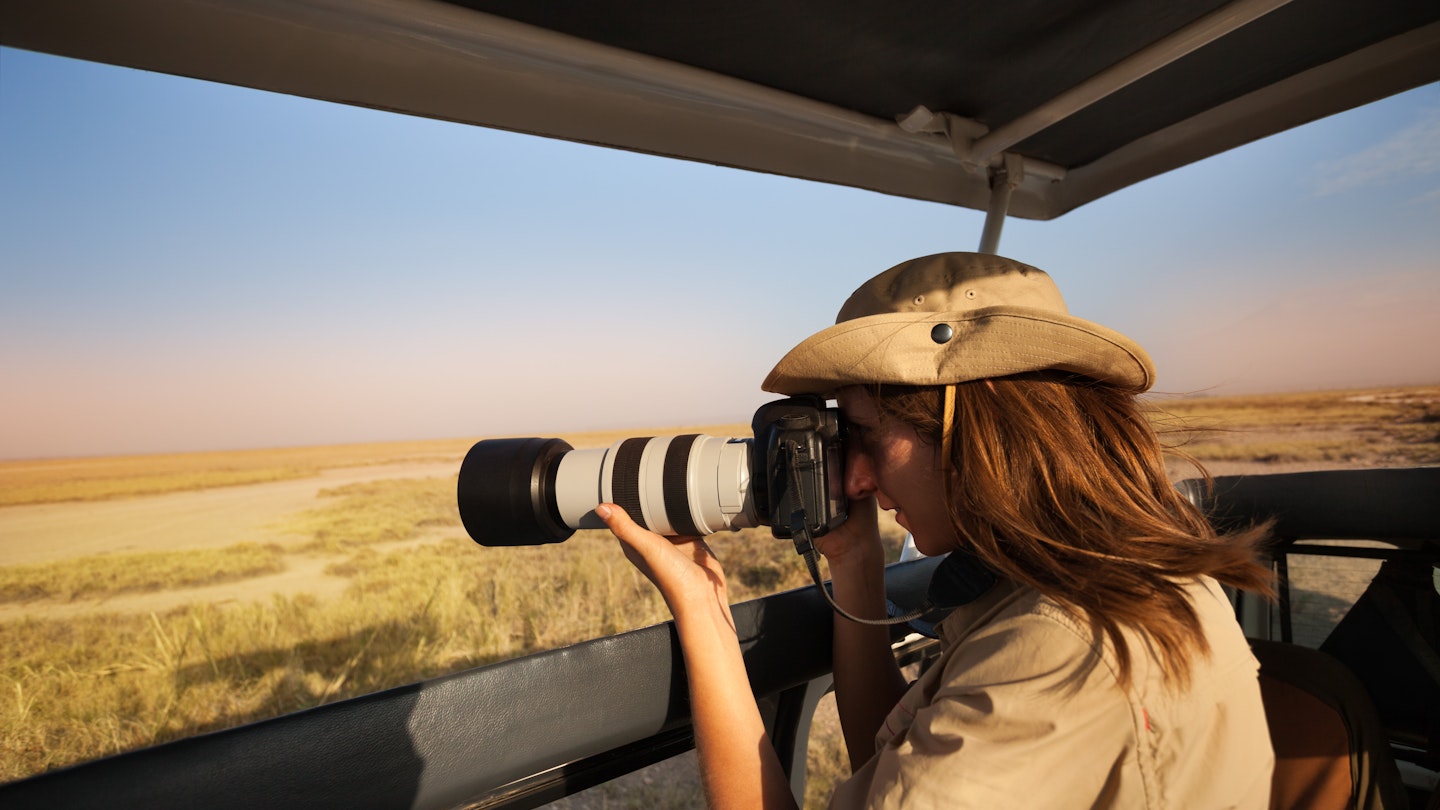
May is a good time for wildlife photography in Kenya, with incredible light and colors © SerrNovik / Getty Images
With about half the country on either side of the equator, Kenya ’s climate isn’t a straightforward split of dry and wet seasons. In fact, its dry season has a short wet season, and its wet season is interrupted by a dry one – clear as mud, right?
What this means practically is there’s not exactly a single best time to visit Kenya. There is somewhere ideal to visit at any time of year, but for the Great Migration, bird migration or quality diving, you’ll need to pick specific months.
For climbers, the dry season is prime time for safety and visibility. Temperatures are generally consistent across Kenya, with the coast hotter – but humidity can vary. It can get cold in the mountains, and Kenya’s highest peak, Mt Kenya , is always covered in snow.
This East African nation counts more than 42 Indigenous communities in its population of nearly 54 million people, and many festivals and events explore this diversity – from the Lamu Cultural Festival celebrating the archipelago’s Swahili heritage and the exuberant Mombasa Carnival to the diverse gathering that is the Lake Turkana Festival.

July to October and January to February are the best times to see the Great Migration
If the wildebeest migration is on your must-see list, head to the Masai Mara from July onward to observe one of nature’s greatest sights – thousands of wildebeest, zebras and giraffes making the move across the Serengeti.
These high-season months are an enjoyable time to visit any of Kenya’s parks because the grass is thin, there’s little rainfall and sightings are easier as animals congregate around waterholes; they're also climber-friendly because of good visibility and lack of rain. July is also a good time to spot huge flocks of pink flamingos at Lake Nakuru .
Much like July, August is one of the best all-around months to visit Kenya, but it’s a busy time. The Great Migration is well and truly underway, and wildebeest are filling the plains of the Masai Mara. If you’re not in the Mara, August is an excellent time to visit other national parks and conservancies around Kenya .
You can also visit Nairobi without the humid stickiness that makes urban exploring harder work. The capital’s food scene is popping, and Nairobi Restaurant Week is a chance to get your fill. For a hyper-local experience in Samburu County in northern Kenya, the one-day Maralal Camel Derby is a colorful display of camels, costumes and culture.
September offers the best of July and August in terms of weather and wildlife but with slightly fewer crowds, especially in the latter part of the month. You can still catch the migration as hot, dry weather sets in, and there’s almost no chance of rain. It's also when the East African Community Arts Festival JAMAFEST takes place. It’s every two years and rotates between East African nations.
Nairobi hosts the Tusker Safari Sevens in October, an annual Rugby Sevens tournament open to international teams, creating a buzz in the city. October 20 is Mashujaa Day, also known as Heroes Day, honoring those involved in Kenya’s independence movement. It’s a public holiday, and Nairobi and coastal areas are buzzing as Kenyans head to the beaches and parks.
Hot and dry, the high season beckons as the new year begins. January is a popular and busy time for everything: safari, hiking, city exploring, diving, snorkeling and beach stays. Dry season is particularly good (and safe) for climbing Mt Kenya and other peaks and for hiking in places such as Hell’s Gate National Park .
You can usually benefit from low season prices at Masai Mara because the big migration is over, and migratory birds fly into the Mara instead. Celebrate the dawn of a new year on a Mombasa beach ; the city hosts major celebrations.
February sees both the high and dry seasons in Kenya. The lack of rain makes it a popular choice for safari, with minimal muddy terrain and plenty of wildlife to see. It’s also a top time for climbing and hiking , although as it's peak season, crowds and prices can both increase.

November, December and March are the best times for lush landscapes and underwater adventures
November is a fun month for festival lovers, with both Mombasa Carnival and Lamu Cultural Festival celebrating the rich heritage of Kenya’s ethnic groups and communities.
Floats, music and dance epitomize Mombasa’s street party while on the archipelago of Lamu off the northern coast, Lamu Cultural Festival includes traditional dancing called ngoma and centuries-old skills such as dhow (sailboat) building, donkey racing, fish-trap making and dhow regattas.
For Kenya’s South Asian population, Diwali/New Year celebrations take place (sometimes in October), so the temples are buzzing, decorations are up and there’s an above-average production of Indian mithai (sweets). Weather is mixed with sun and rain, but November remains a good bet for safari.
If you like your landscapes lush and abundant, December in Kenya is magical. The rains tend to stop around the middle of the month, and Kenya’s parks take on a gorgeous green hue ahead of the upcoming second “high season” of January and February. Water visibility is optimal during the shoulder season too, so this is a great time for divers and snorkelers.
December 12 marks Jamhuri Day. Jamhuri means republic in Swahili, and this day is when Kenya marks its 1963 independence from Britain and its constitution as a republic a year later, with cultural events, dances and music.
The two-day Rusinga Cultural Festival on Lake Victoria celebrates the threatened culture of the Abasuba people, while the Beneath the Baobabs Festival in Kilifi is one of the country’s best music festivals, with East African and international performers, giant art and cool costumes.
It's getting hotter and more humid as the rainy season beckons, but March remains a particularly enjoyable time to be in Kenya. Prices can be in the traveler’s favor , and often the rains arrive later in the month, so you should be fine in the earlier half.
Diving and snorkeling are rewarding in March, with clear water and good visibility, and beach parties are especially welcome on these balmy evenings as the hot, dry season begins to give way to the rains. Muslim Kenyans observe the holy month of Ramadan, while for walkers, climbers and outdoors types, the Mount Kenya Festival is a celebration of the country’s highest peak.

April to June is the best time for smaller crowds and lower prices
The “long rains” hit in April and May, and sometimes in March too. While the rainy season can be off-putting for some travelers, this time of year can be incredibly rewarding, and the Mara remains accessible in March. Crowds thin out, and you can enjoy the quietness and solitude of nature.
Some safari lodges and camps close during this time because constant rain can hamper visibility in some parks, and the humidity can be uncomfortable. It’s still a great time to be by the coast, but heavy rains can reduce visibility for divers and snorkelers.
But don't dismiss May for safari or wildlife viewings! Yes, the grasses are longer, and sightings are trickier, but the light and colors can be extraordinary for photography. Samburu National Reserve in northern Kenya is a good choice as wildlife gathers on the riverbanks of the Ewaso Ngiro River.
June is a wonderful time to experience Kenya’s highlands, and with low humidity, walking and climbing become a little easier. This shoulder-season month is a lovely time for wildlife viewing, especially in northern Kenya after the long rains, and it’s also the start of the migration. The coast is mostly dry, and prices are a little lower before the high season kicks off in July.
Parades, singing and dancing take place on Madaraka Day on June 1 – the anniversary of Kenya’s move to self rule. The visually spectacular Lake Turkana Festival in the Rift Valley brings together different ethnic groups in the region, to both celebrate their diverse cultures and promote peace.
If you’re into off-road racing or want to watch, the Rhino Charge , a 4x4 race that raises funds to conserve mountain ecosystems, is quite a spectacle.
This article was first published July 2022 and updated November 2023
Explore related stories
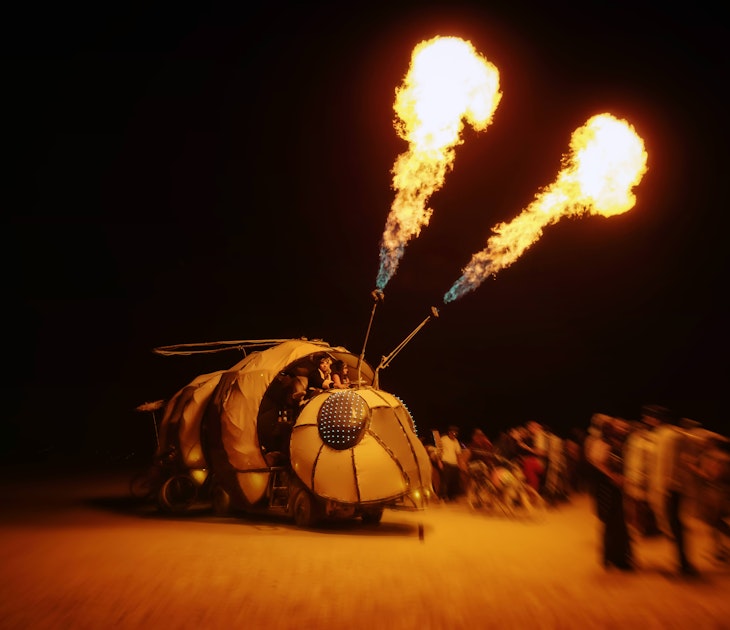
Jan 2, 2023 • 12 min read
Want to start planning for the year ahead? Featuring sports events, natural phenomena and more, these are 20 amazing trips to consider taking in 2023.

Feb 20, 2024 • 17 min read

Jan 2, 2024 • 11 min read
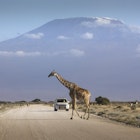
Dec 13, 2023 • 9 min read
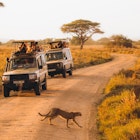
Dec 8, 2023 • 4 min read

Nov 30, 2023 • 9 min read

Nov 29, 2023 • 4 min read
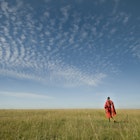
Nov 28, 2023 • 8 min read
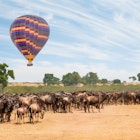
Nov 23, 2023 • 8 min read
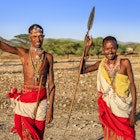
Nov 21, 2023 • 7 min read

- South Korea
- Indonesia (Bali)
- Central Asia
- African Safari
- South Africa
- Itinerary Ideas
- The Best Times(Worst Time) to Visit Kenya 2024/2025 for Safari /Beach
Kenya will abolish visa requirements for global visitors starting in January 2024, guaranteeing a smooth and expedited entry process.
The best times to visit Kenya for a safari are from July to September or January to February during the country's dry seasons, however, these are also the most crowded travel times.
The best time for you to visit Kenya largely depends on what you want to see and your personal preferences. Read our article to find out the best times to visit Kenya based on different factors
Kenya Weather and Climate in Brief
Kenya is located on the equator and temperatures there are similar all year round , but it does have different climate zones: mild/warm in the highlands, warm/hot on the coast, and hot/scorching in the northern desert. There are major two seasons in the country: the rainy season and the dry season.
- Dry season : January to February, July to September
- Rainy seasons : October to December (short rainy season), March to May (long rainy season)
- Wettest month : April
- Hottest month : March, 21°C (70°F)
The Best Time to Visit Maasai Mara for the Great Migration
The best time to see the wildebeest migration in Maasai Mara is from July to September . During this period, you would see enormous herds of wildebeest and zebra in Maasai Mara. If you want to see the animals cross the Mara River, the best times are July and August.
This is also the dry season and, apart from the spectacle of the migration, you would have the best chance to see much more wildlife than usual as they gather around the water holes.
This is also the summer vacation season, so it is a great opportunity to see this impressive occasion with your family.
- Weather : sunny and dry
- Temperature : min: 10°C (50°F), max: 25°C (77°F)
- Travel conditions : high travel season, most crowded, most expensive; good lodges and camps are hard to book.
The Best Times to Visit Kenya for Wildlife and Safari
The best times to go to Kenya for a safari are from June to October and January to February. These are the dry seasons. The weather is comfortable with sunny days and cool evenings. Animals are easy to spot as they gather around the water holes. As a bonus, there are fewer mosquitoes.
The period from January to February is relatively quieter compared to the migration period from July to September. Moreover, it is the optimal time to witness the presence of baby wildlife. Fortunately, in Maasai Mara and Amboseli National Reserves, you can encounter adorable baby elephants, lion cubs, baby zebra, and more.
- Temperature : June to October: 10–25°C (50–77°F), January to February: 9–28°C (48–82°F)
- Travel conditions : It's the high travel season, which is crowded and expensive. Lodges and camps are in huge demand.
However, the best time for weather does not always mean the best experience. The smart arrangement and flexible schedule even matter more . Contact us to tailor a tour that offers the best possible experience by carefully arranging and maintaining a flexible schedule.
The Best Time to Visit Mombasa for Beach in Kenya
The best time to go to Kenya's pristine coastline for a beach vacation is from October to early March due to the comfortable weather conditions. If you prefer water activities, such as diving and snorkeling, the best time for you to visit Kenya's beaches is in November. Kenya boasts some of the best beaches, including Diani Beach in Mombasa and Lamu Island.
- Weather : Kenya's coast is humid all year round and rain could occur at any time, but it is pleasantly warm/hot.
- Temperature : 24–30°C (75–86°F)
- Travel conditions : high travel month
The Cheapest Times to Visit Kenya
The cheapest times to visit Kenya are during its rainy seasons . The short rainy season is from November to December and the long rainy season is from late March to May. March to May is definitely the cheapest time for a safari . But your travel experience may not be as good as hoped as the rain may interrupt your visit.
- Weather : wet, cloudy
- Animals : Animals are not easy to see as they tend to scatter around the park, but they may be very active.
- Travel conditions : It's the low travel season, with cheaper prices and fewer crowds. Good discounts for lodges are easy to get.
The Worst Months to Visit Kenya
The worst time to go to Kenya for a safari and beach vacation is from late March to May, which is the long rainy season in Kenya. Kenya's beaches around the Indian Ocean coastline are very hot and wet with tropical storms.
- Weather : Very wet — there are usually frequent storms and showers during this period
- Road conditions : The paths in the parks could turn pretty muddy and some roads may not be accessible because of the floods.
- Animals : You might also see fewer animals as they tend to spread out when it's wet rather than gathering around water holes.
- Travel conditions : Some camps may close because of the bad road conditions. It is the cheapest time of the year to travel.
Benefits of Traveling during the Worst Months
However, the worst period is not too bad to travel, as the rain doesn't usually last all day and it often happens in the mornings or evenings. The sun also usually comes out quickly after a shower. There are some benefits to visiting Kenya aside from the weather.
- Cheap prices : You could enjoy very reasonable prices. Safari lodges even offer discounted rates that are 30–50% lower than usual.
- Very quiet : There are fewer travelers and you don't have to wait your turn to see the animals.
- Animals are active : Some animals, such as lions, leopards, cheetahs, and hippos, are more active.
Don't let the weather stop your Kenya travel plans. If these months are your only opportunity, seize the chance ! A flexible itinerary and being accompanied by an experienced guide could truly elevate your experience. Let's customize a private trip exclusively for you .
The Rainy Seasons in Kenya
There are two rainy seasons in Kenya: the short rainy season from late October to December and the long rainy season from mid-March to May. The long rainy season sees a higher amount of rainfall than the short rainy season.
The short rainy season : This period has lower rainfall than the long rainy season and lasts from mid-March to May. You could expect brief but intense showers, usually in the afternoons or evenings. The sky is often overcast and temperatures are relatively cool. Due to the lower amount of rainfall, this season does not see much flooding, which the main rainy season does.
The long rainy season : This is the wettest period in Kenya. There are many heavy showers or downpours, which mainly occur in the evenings or at night. They usually last for about half an hour to an hour. The rain may cause floods and roads inside the wild animal reserves may become inaccessible.
Weather and Climate in Kenya
The temperature in Kenya is quite similar all year round . It has two types of seasons: rainy and dry seasons. It is dry with almost no rain in the dry seasons while the wet seasons are very humid.
The dry seasons typically occur from January to March and from July to October. During these periods, there is almost no rain. The weather is sunny, clear, and dry. The temperature is very comfortable. For example, Nairobi has average temperatures ranging between 20°C (68°F) and 28°C (82°F) during the day but is cooler at night at about 10°C (50°F) to 15°C (59°F).
The dry season is the best time for a safari trip in terms of the weather. It is also the busiest time to travel there.
Month-by-Month Guidance for Traveling in Kenya
Visiting kenya in january.
It is one of the high travel months in Kenya. It is the dry season. It is a great time to see wildlife in Maasai Mara and to get stunning views of Mount Kilimanjaro in Amboseli National Park. The land is green after the short rainy season and the animals are very active. You can also have the chance to see newborn animal babies.
The weather is very comfortable. In Nairobi, it stays around 24°C (75°F) going down to 13°C (55°F) sometimes. Over at Maasai Mara, the temperature swings between 12°C and 30°C (54°F and 86°F) on average. And if you decide to visit the coastal towns and resorts around Mombasa, expect it to be warmer at about 32°C (90°F) in the afternoon.
It is a great time to go on a safari and go hiking, diving, and snorkeling. However, it becomes crowded during this month, especially around New Year when prices and visitor numbers are highest.
Visiting Kenya in February
February is one of the best seasons for safari trips. It is the dry season. The tracks inside the park are dry, making it easy to drive along. Animals in Samburu National Reserve and Maasai Mara are very active. You will spot elephants, zebras, and giraffes in the park in large numbers.
The weather is very comfortable and similar to that in January. February is also the best month for bird-watching.
Visiting Kenya in March
The rainy season arrives in this month. Animal-view this month is a bit challenging, but you can still do it. The rains may make the tracks through the park full of mud, making them inaccessible. It is challenging for game viewing as animals may be dispersed from water sources and the thick vegetation may make it harder to spot them. However, your skillful driver would know where to find them.
It is the low travel season. There are fewer travelers in the national parks and on wildlife safaris. You may have the chance to get a better view of the animals if you're well-guided. You can travel at a very competitive price. Hotels offer great discounts and airfares are much cheaper.
Visiting Kenya in April
April is the wettest month in Kenya. If April is the only time you can visit Kenya, don't hesitate. Just go for it! And if you are after a bargain trip, April could be a top pick. You can get a great discount on lodges this month and the airlines may also offer great discounts.
In April, you may expect storms and showers but the rain doesn't usually stick around for too long. It often comes in the evening or as a quick shower, so it probably won't mess up your safari plans for the next day.
Animals are not easy to spot but our experienced drivers and guides still know where to find them. And you will see many hippo calves in Maasai Mara this month.
Be aware that some camps may close this month and the coast is wet and hot.
Visiting Kenya in May
Most travel guides suggest that you don't go during this month because of the rainy season. However, it is not actually that bad.
It is true that it's the rainy season, but the rains often come in the late afternoon or at night and don't last long. Sometimes there are short showers.
The rain brings inconvenience to a game drive, but you can still do one with an experienced driver. The roads through the park may be muddy and certain routes may be blocked, but our drivers can often take a detour.
Visiting Amboseli National Park in May can be an amazing experience — you'll see cloudy skies and huge herds of elephants enjoying the lush green vegetation in the swamps. If you're heading to Maasai Mara, just make sure to pick a camp or lodge that stays open in all weather conditions. Some camps close during the wet season because some roads can get too tricky to travel on.
Visiting Kenya in June
June is a good time to travel with children as you do not need to worry about the heat from the sun and the humidity . The large numbers of travelers are yet to arrive so you will have a bit of time to see the sights with fewer travelers in the park.
The rainy season ends this month, although there are occasional showers. June marks the beginning of the high travel season. The weather is comfortable, being warm by day and cool at night in the highlands/savanna. Although dry, it may be cloudy on most days.
June is not a good time for a beach vacation and underwater activities as it is hot and wet on the coast.
Visiting Kenya in July
From July to September, Maasai Mara and other parts of Kenya have the most traveler numbers. The Great Migration of Wildebeest in Maasai Mara attracts large numbers of travelers from all over the world.
July is one of the best times to travel, both for a safari tour and a beach vacation in Kenya. The weather is dry with almost no rain (except for on Mount Kenya and in Hell's Gate). Animals are easier to spot as the vegetation is less dense. The weather is sunny on the coast, so it is a good season for underwater activities.
If you're worried about travel costs, July might not be the best fit for you. Accommodation can get pricier — sometimes even double compared to the low travel season. And finding a place to stay could be a challenge due to high demand. But, on the upside, the experiences you'll have in Kenya are surely worth it.
Visiting Kenya in August
The Great Migration of Wildebeest in Maasai Mara is in full swing this month. You will have the chance to witness countless wildebeest and zebras crossing the Mara River. The weather is warm in the day and dry. This is the best month to go weather-wise.
August is also the best month to watch humpback whales off the coast of Kenya, breaching the surface of the water and displaying their might.
But be warned of the high travel season. It is the most crowded month of the year. You might see rows of vehicles lining up by the river banks, all there to witness the awe-inspiring river crossings of wildebeest. But the incredible views are absolutely worth it.
Be aware that the exact timing of the animal river crossings can't be predicted. But don't worry! Choosing a skillful travel guide and driver can definitely boost your chances of catching this unforgettable sight.
Visiting Kenya in September
September is a good time for an exciting safari trip without many crowds. You may see the last wave of wildebeests cross the Mara River. As the vegetation has dried out, animals tend to cluster around the water holes in the parks. So, it is easy to see them and also a good photo opportunity as there is no grass or other vegetation blocking your view.
Although it is still the high season, there are fewer travelers than in August. The chance to see humpback whales off the coast is also high this month.
Visiting Kenya in October
The early part of October can still be an excellent time for game viewing: it's the dry season without many travelers. The weather changes from the dry season to the wet season during this month. Rain usually arrives late in the month. You may still have the chance to see the migration out of Maasai Mara, depending on the weather.
Visiting Kenya in November
November is the shoulder season in Kenya. It is the short rainy season, which means that you may have short periods of rain or occasional showers during this period. The grassland is beautiful with lots of greenery and the sky is clear. If you are not worried about the haze and pollen in the air, this is a good time to go.
The animals may not be in large herds and are more dispersed across the parks, but tourist numbers are moderate.
Visiting Kenya in December
The rain in December should not affect your safari too much as it often falls in the afternoon and rarely lasts long. This is the shoulder travel season so you may enjoy a very reasonable travel price (but not as good as the low season from March to May). There are not as many travelers so you may find some beautiful quiet areas, where you can enjoy watching a cheetah or a herd of elephants all to yourself.
Although it gets busier in the latter part of the month, as the Christmas holidays come along, it is still much quieter than in the high travel season from July to October.
It's also a fantastic time of year to take a wildlife safari into any of the many national parks. In Samburu National Reserve, for example, you'll see zebras, giraffes, elephants, cheetahs, and all manner of African animals. Amboseli National Park has stunning views of Mount Kilimanjaro and December is one of the best times to visit because the lack of haze affords better views of the giant mountain.
Visit Kenya with Us
A safari trip to Kenya can be a memorable adventure. But without proper planning, it might not go as you hope. You wouldn't want to travel all the way there and not spot any animals or have to deal with unwanted large crowds, would you? So, let's turn this around. We will tailor-made a thrilling safari trip to ensure that you'll have a fantastic time in Kenya.
Why Global Highlights (10,000+ reviews & 98.8% 5-star rating)
- Save Your Time:
- Less research, more enjoyment!
- Real-time 1V1 expert planning
- Maximize Your Flexibility:
- Personal local guide and ride
- Explore at your own pace
- Celebrate Your Journeys:
- Specially-crafted family adventures
- Celebrate milestones with style!
- 9-Day Kenya Active Family Private Safari Tour
- 12-Day Kenya Best Safari Tour with Amboseli
- 12-Day Kenya and Tanzania Best Safari Tour
- 15-Day Egypt and Kenya Highlights Tour
- Private Morocco Tours 2024/2025: Personalized and Stress-free
- Middle East Tours 2024/2025: Personalized and Stress-free
- Thailand Tours
- Vietnam Tours 2024/2025: Unique Personalized Experiences
- Top Private Turkey Tours 2024/2025: Personalized and Stress-free
- How Long to Spend in Kenya?
- 1 Week in Kenya — 4 Time-efficient Itineraries
- 10 Days in Kenya - 4 Unique Itineraries with Special Experiences
- 2 Weeks in Kenya — 4 Unique Itineraries for Families and Couples
- How to Plan a Thrilling Safari Trip to Kenya
- How to Plan a Lifetime Trip to Kenya
- How to plan a Family Trip To Kenya That Everyone will Enjoy
- How Much Does a Kenya Trip Cost?
- Kenya Weather in January: Travel Tips for First-Timers
- Kenya Weather in February: Travel Tips for First-Timers
- Kenya Weather in March: Travel Tips for First-Timers
- Kenya Weather in April 2024: Travel Tips for First-Timers
- Kenya Weather in May 2024: Travel Tips for First-Timers
- Kenya Weather in June 2024: Travel Tips for First-Timers
- Kenya Weather in July 2024: Travel Tips for First-Timers
- Kenya Weather in August 2024: Travel Tips for First-Timers
- Kenya Weather in September 2024: Travel Tips for First-Timers
- Kenya Weather in October 2024: Travel Tips for First-Timers
- Kenya Weather in November: Travel Tips for First-Timers
- Kenya Weather in December: Travel Tips for First-Timers
Get Inspired with Some Popular Itineraries
More travel ideas and inspiration, sign up to our newsletter.
Be the first to receive exciting updates, exclusive promotions, and valuable travel tips from our team of experts.
Why Global Highlights
Where can we take you today.
- Southeast Asia
- Japan, South Korea
- India, Nepal, Bhutan, and Sri lanka

- Travel Agents
- Privacy Policy

Address: Building 6, Chuangyi Business Park, 70 Qilidian Road, Guilin, Guangxi, 541004, China

The Best Time to Visit Kenya
:max_bytes(150000):strip_icc():format(webp)/DSC00412-5b73daf7c9e77c0057ca2198.jpg)
James Warwick/Getty Images
The answer to the question "when is the best time of year to visit Kenya ?" is best answered with another question: What do you want to do while you're there?
If you're hoping to go on safari, the best time to visit Kenya is from June to October, the country's dry season. Often, these peak times are dictated by the weather , but sometimes there are other important factors to consider. Of course, if you're looking to explore Kenya on a budget, you may want to avoid peak season altogether, because a slight compromise on weather or wildlife sightings usually means much cheaper rates for tours and accommodation.
The Weather in Kenya
Because Kenya is located on the equator, there is no real summer and winter. Instead, the year is divided into rainy and dry seasons . There are two dry seasons: a short one in late January and early February, and a much longer one lasting from late June to October. The short rains fall in November and December, but by far the wettest season is the period from March to May. Temperatures are relatively consistent in each region of Kenya, but vary from one place to the next according to elevation. The coast, for example, is considerably hotter than the plateaus of central Kenya, while Mount Kenya is so high that it is permanently capped with snow. Humidity also increases at lower elevations, while the arid north is both hot and dry.
Catching the Great Migration
Every year, Tanzania and Kenya provide the backdrop for one of the world's most breathtaking wildlife spectacles—the Great Migration . Millions of wildebeest and zebra start the year in Tanzania's Serengeti National Park, then gradually make their way northward to the more plentiful grazing grounds of the Maasai Mara . If you want to witness the herds cross the crocodile-filled Mara River (the holy grail of Great Migration safaris), the best time to travel is in August. In September and October, the animals that survive this treacherous crossing fill the Mara plains. This is the most reliable time to see the herds and the predators that follow in their wake.
The Best Time to Go on Safari
If you're not trying to catch the Great Migration, you have more choice in terms of the best time to go on safari season. Generally, the best time to travel is during the dry seasons (January to February or June to October). At these times, animals are easier to spot not only because the bush is less dense, but because the scarcity of water means that they spend much of their time around the waterholes. The short wet season also has its benefits. At this time, the parks are beautifully green and there are far fewer tourists. The rains fall mainly in the afternoon, and migrant birds arrive to take advantage of the sudden abundance of insects. It's best to avoid the March to May wet season, however, because the rains are often relentless.
The Best Time to Climb Mount Kenya
The best (and safest) time to climb Mount Kenya is during the dry seasons. January, February, and September are generally considered the most reliable months in terms of weather—at these times, you can expect clear, sunny days with enough warmth to counteract the chilly nights brought on by high elevation. July and August are also good months and can provide an alternative option for those who prefer their routes less crowded. Whatever time of year you decide to attempt the summit, make sure to pack for every occasion, as temperatures and weather can both change dramatically depending on the time of day and your elevation.
The Best Time to Visit the Coast
The weather on Kenya 's coast remains hot and humid throughout the year. Even in the dry season, rain can fall—but humidity and rainfall are at their worst from March to May. The short dry season (January to February) is also the hottest, but cool coastal breezes help to make the heat bearable. Generally, the best way to decide on when to visit the coast is to prioritize the other aspects of your trip first. If you're planning on combining a trip to Mombasa with a few weeks looking for wildebeest herds in the Maasai Mara, travel in August or September. If you're planning to relax at Malindi after hiking up Mount Kenya, January or February are better months to visit.
March is typically the last dry month before rainy season moves in April. While temperatures remain steady, the weather is extremely humid. May is slightly dryer and can be a good time for safaris, as many animals are migrating.
Events to check out:
- In March, Nairobi is home to the East African Art Festival. The three-day event features art, music, theater, music, fashion, literature, architecture, sculpture, and traditional crafts.
Summer's calendar months actually mean winter for Kenya—but this means great weather, too. While June is the last of the country's rainy season, July and August are very dry and not too hot, with temperatures around 80 degrees Fahrenheit. Both months are excellent for visits to the Maasai Mara National Reserve.
- The International Camel Derby and Festival is held each August in Maralal, a town in northern Kenya. Camel racing takes place over several days through the desert and visitors attend from all over the world.
September in Kenya is dry, but precipitation will usually move in by early October. Still, daytime temperatures are warm, usually above 80 degrees Fahrenheit. November gets even hotter, so many tourists will flock to the beaches. Migrating birds peak in both the Aberdare National Park and Great Rift Valley.
- The Lamu Cultural Festival draws visitors each November to the Lamu Archipelago on the eastern coast of Kenya. The three-day festival celebrates life in this old-world island destination off the beaten path, about a two-hour flight from Nairobi.
With high temperatures above 90 degrees Fahrenheit, "winter" is the perfect time for seaside vacations along the Indian Ocean. January is quite hot and dry and even the ocean's water temperature climbs into the 80s. This is a great season for both beach activities and exploring the more than 40 national parks and game reserves in the country.
- Jamhuri Day, held on December 12, celebrates Kenya's independence from Great Britain on this day in 1963. Many towns host performances and fireworks displays.
The best time to visit Kenya is during the country's dry season, from June to October, especially if you want to go on a safari.
Kenya experiences two rainy seasons: March to May is considered the time of the “long rains,” and “short rains” happen from October to December.
February is the hottest month in Kenya, with an average high temperature of 80 degrees F (27 degrees C).
The Best Time to Visit Malaysia
How to Experience the Great Migration in Kenya and Tanzania
The Best Time to Visit the Maldives
Weather in Kenya: Climate, Seasons, and Average Monthly Temperature
The Best Time to Visit the Great Barrier Reef
Top 10 Unmissable African Safari Destinations
The Best Time to Visit Mexico
Serengeti National Park, Tanzania: The Complete Guide
The Best Time to Visit Nairobi
The Best Time to Visit Japan
The Best Time to Visit Kerala
The Best Time to Visit Morocco
The Weather and Climate in Japan
The Best Time to Visit Spain
The Weather in Greece: Climate, Seasons, and Average Monthly Temperature
- Deutschland
Best Time To Visit Kenya

Understanding Kenya’s climate
The best time to visit Kenya depends on what you want to do. Kenya is divided by the equator and is characterized by a tropical climate.
The weather in Kenya is often ideal, although the coast can be very humid and there are hot, desert-like conditions around Lake Magadi and in the northern areas of the country around Lake Turkana. Most regions in Kenya have temperatures between 71-91°F a day, and they rarely drop below 55°F at night. Even during the short rains, the humidity during the day is mostly low and the sky is clear enough to see the Milky Way at night.
During the coolest months of June, July and August, temperatures in Nairobi are around 60°F, which can drop to about 50°F in the Aberdare region and the Mount Kenya massif.
Best Time To Visit Kenya By Month
We recommend.
- Head to the northern coast of Kenya and discover a colorful underwater world where you can go snorkeling or soak up the sun on one of the palm-lined beaches
- With a little luck you can see the Big Five among the endless bush landscapes of Tsavo East National Park
- Witness giant elephant herds following ancient hiking trails in the rocky landscape of Samburu and spot the rare Grévy’s zebra on the banks of the Uaso Nyiro River
- Travel to Laikipia in central Kenya for exclusive nature and wildlife experiences
- Explore Chale island just off Kenya’s southeastern coast and discover an idyllic retreat dotted with inland tidal lakes, pristine beaches and vibrant coral reefs.
- Head to Kisumu on Lake Victoria – the principal city of western Kenya has a relaxed ambiance and is a haven for fresh fish enthusiasts, given its many fish markets!
- Plan a visit to the Karen Blixen Museum in the bustling capital city, Nairobi, to learn about the changing history of Kenya
- Head to the Amboseli National Park, at the foot of the imposing Mount Kilimanjaro, and spend time in one of the best places to see African elephants
- Visit the most arid region in Kenya – Chalbi Desert – and marvel at its stunning natural landscape replete with volcanoes and ancient lava flows and towering sand dunes
- Witness the Great Migration in the Masai Mara National Reserve, where millions of antelopes, zebras and wildebeest cross the savanna landscape from July to October
- If you want a break from the wildlife, the pristine paradise at Kiwayu Island with its virgin beaches, crystal clear waters, dolphins and whales and a host of water sports awaits!
- Head to Meru National Park, made famous by the movie ‘Born Free’, home to stunning natural beauty as well as a diverse range of animals
- Head to Lake Elementaita, a small soda ash lake as the dry season is the ideal time to catch a glimpse of its diverse wildlife
- Make the painstaking journey to remote Lake Turkana and be rewarded with views of the world’s largest desert lake and its fearsome Nile crocodiles!
- For something different, travel to Kericho, Kenya’s tea territory!
- Witness the flamingos at Lake Nakuru – over one million of these graceful birds can be found fishing in the lake for their feast of delicious algae!
- If you are yearning the great outdoors then we recommend a hike in the foothills of Mount Kenya
- Enjoy the diverse birdlife at Lake Naivasha and game viewing at Hells Gate National Park, to the south of the lake
- Before the rains arrive, discover Kakamega Forest National Reserve, the only tropical rainforest in Kenya, home to some of Africa’s best-known tree species and exquisite orchids
- Make the most of the dry conditions by enjoying the abundant wildlife at The Aberdares
- If you are keen on birdwatching, this is right time to make a trip to the saline Lake Bogoria with its two million migratory birds!
- While the Great Migration is over, the increasing greenery heralds the arrival of newborns in the Mara, giving you unique wildlife viewing and photographic opportunities
- Spend time in the city of Mombasa, with its beautiful beaches and touches of Arabic and Portuguese architecture. Witness the vibrant Mombasa Carnival held during this month!
- Visit the dramatic collection of ancient volcanic cinder cones of Chyulu Hills and spot large herds of elands, giraffes, zebras, wildebeests, lions, buffaloes and elephants
- Enjoy a rich cultural experience by visiting the old town of Lamu, a UNESCO World Heritage site, an almost car-free town with diverse architectural influences

Best time to visit Kenya by season
- Hot months: January to March
- Long rains: April to June
- Cold months: June to August
- Short rains: November to December. It is rarely raining all day. Short, heavy rainfalls are usually replaced by sunny periods, which makes this time in Kenya very pleasant.
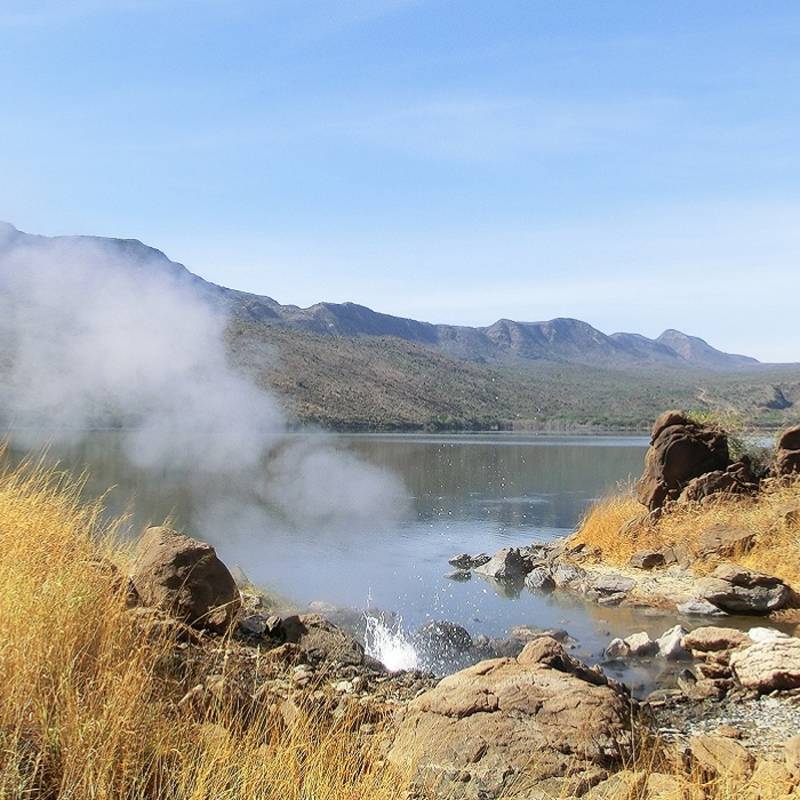
What to Pack
Safari wear should be comfortable and casual. Evenings and early mornings can be chilly so warm sweaters are recommended. Low heeled comfortable sports or trekking shoes are the most suitable walking shoes, should you intend joining any walking safaris.
We recommend you bring warm clothes, including a fleece or light wool sweater and socks, apart from the normal safari gear. During the day it can get quite hot so don’t forget sunglasses and a high factor sunscreen, as well as a sun hat with a small brim.
Some specialist trips, i.e. mountain climbing, require extra items of clothing and footwear. Many hotels, lodges and camps have swimming pools so you are advised to bring swimsuits.
Due to limited space in the vehicle and light aircraft, we advise you to keep your luggage to the minimum. We suggest you pack your luggage into a small bag of no more than 15 kgs – the luggage limit for local flights issued by the airlines. Almost all safari lodges and camps provide same day laundry service.
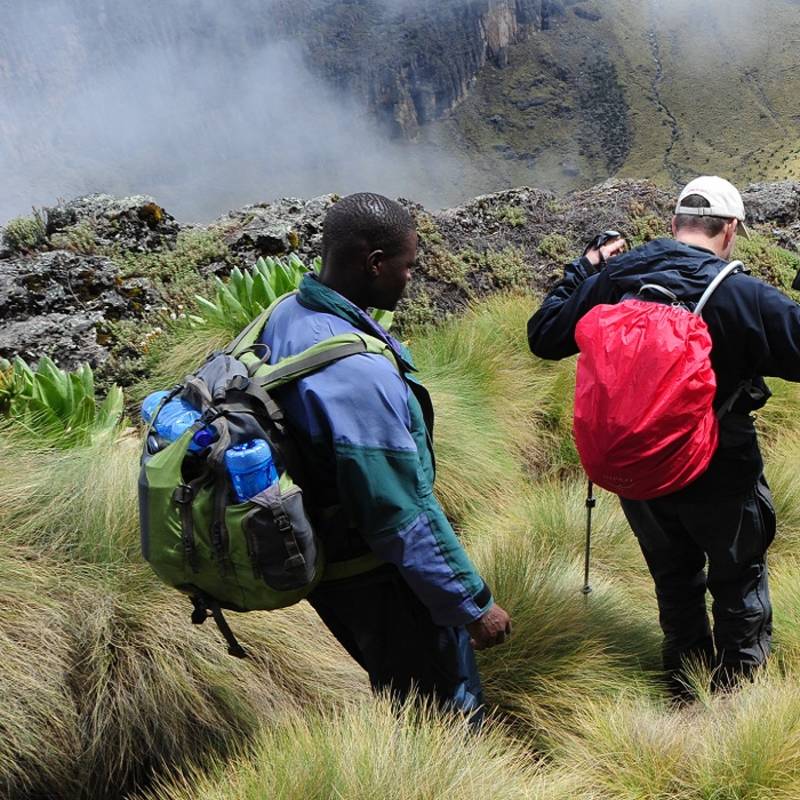
Popular Trips to Kenya
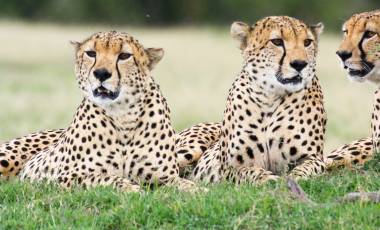
Kenya Safari: Masai Mara, Ol Pejeta And Solio
Visit Kenya’s iconic wildlife reserve and hidden gems! Ol Pejeta has the highest density of wildlife while Solio is home to rhinos and lots more. Round off your experience with Big Five safaris in Masai Mara.
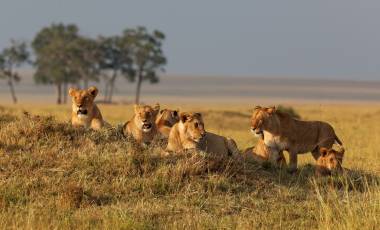
Kenya and Uganda Safari Tour: Big Five and Gorilla Trekking
This private Kenya and Uganda safari tour is a great way to discover Africa’s diverse wildlife. The adventure begins at Ol Pejeta Private Game Reserve, one of the largest rhino sanctuaries in East Africa, where you can enjoy game drives and sundowners everyday. Classic Africa awaits you in the iconic golden grasslands of Masai Mara,…

Kenya and Zimbabwe: Safari and the Falls
Exciting safaris, cascading waterfalls and enriching cultural experiences: this 11-day tour of Kenya and Zimbabwe opens you up to the raw beauty of the region. From exploring Nairobi’s contemporary art and culture scene to soaring over the Masai Mara in a hot air balloon, the tour promises an eclectic mix of experiences. Round off your…
Best Places To Visit
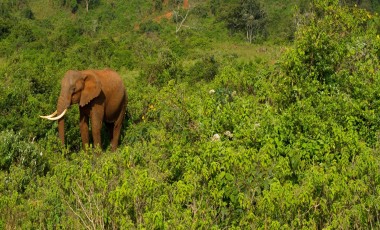
The Aberdares offer striking mountain scenery, combined with stretches of dense jungle and amazing waterfalls, the largest ones plunging dramatically more than 300 meters!
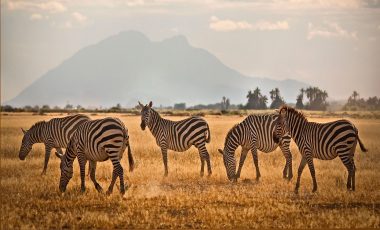
Amboseli National Park is located in Kajiado County, Kenya. It only covers 151 sq miles but is part of the much larger Greater Amboseli ecosystem that totals some 3,088 sq miles.
Amboseli National Park
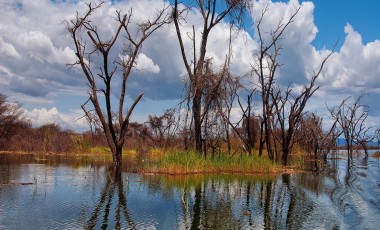
This beautiful Lake Baringo, surrounded by picturesque islands and encircled by majestic mountains, is truly a sight for sore eyes! Filled with fish, the freshwater lake attracts many herons, cormorants and marabous. Lake Bogoria is visited by up to two million migratory birds!
Baringo & Bogoria
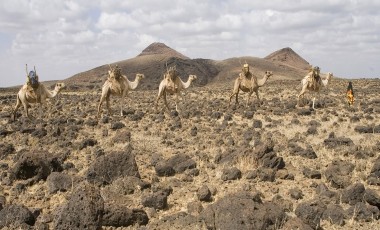
Surrounded by volcanoes and ancient lava flows, Chalbi Desert is the hottest and most arid region in Kenya.
Chalbi Desert
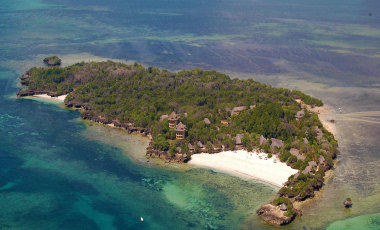
Chale Island is a tropical haven located on the pristine Msambweni Bay just off Kenya’s southeastern coast. Discover a breathtakingly idyllic retreat accessible only by speedboat or a tractor-trailer depending on the tide.
Chale Island
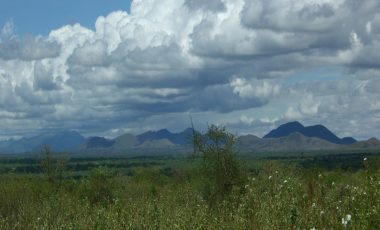
Visit this dramatic collection of ancient volcanic cinder cones and you will not be disappointed! The rolling Chyulu Hills lie to the northwest of Tsavo West National Park and offer splendid views of the magnificent Mt.
Chyulu Hills
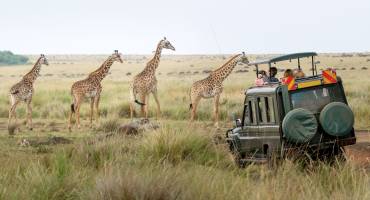
Kenya Travel Guide
Things to do.
Live your safari dream on your Kenya tour with us – Masai Mara, the Great Migration, endless savannas and pristine beaches beckon. Follow this link and discover our list of top ten highlights, attractions and activities in Kenya.
Kenya is generally considered a safe country to travel in. As a rule of thumb, it is safer to travel in a group or with a local tour guide in Kenya, rather than on your own. Our experts have compiled some general safety instructions to ensure that your trip is stress-free.
From the Blog
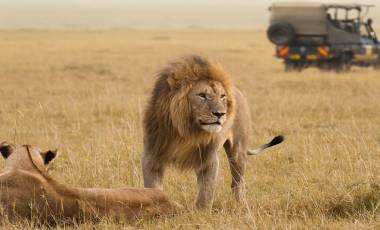
Kenya or Tanzania: Which Wilderness Safari is the One for You?
Have you been dreaming of an Africa safari tour but can’t decide between Kenya or Tanzania? Let’s help you choose the perfect wilderness safari destination for your luxury African tours.
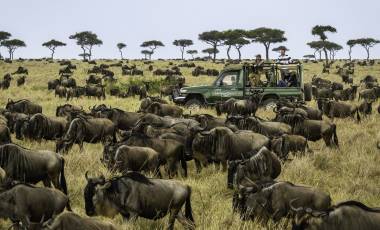
Your Monthly Guide to the Great Wildebeest Migration in Africa
Bless the rains down in Africa! Pack your bags and get ready for the spectacular wildebeest migration across African parklands of the Serengeti and the Masai Mara with this month on month guide.
What Our Guests Say

The Enchanting Difference
Authentic & unique.
Our award-winning, licensed local guides provide incredible insights and exclusive experiences for you.
Personalized & Private
Our experts completely customize your private tour to match your interests and preferences.
High-Quality Experiences
All our accommodations and services are personally tested by our team.
Fully Supported Travel
You’ll have a personal and dedicated trip coordinator, backed by 24/7 support in case of emergencies while you’re traveling.
Financial Protection & Flexibility
Your booking is flexible and completely secure with us.
Safe & Secure
Your safety and well-being are our top priorities.
Do you have a vacation in mind? Personalize your itinerary with our Trip Builder.
- Best time to visit Kenya
Book your individual trip , stress-free with local travel experts
- roughguides.com
- Travel guide
- Itineraries
- Local Experts
- Travel Advice
- Accommodation
Many visit Kenya for once-in-a-lifetime opportunities to see this nation's unique wildlife and landscapes. Yet, planning such a trip can be daunting due to Kenya's unpredictable weather — featuring two rainy and two dry seasons annually. On top of this, the optimal time for wildlife viewing varies throughout the year, making the planning process all the more complicated. Read on for our comprehensive, month-by-month guide to the best time to go to Kenya.
- When's the best time to visit Kenya?
Weather in Kenya month by month
Seasons in kenya, festivals and holidays in kenya, tailor-made travel itineraries for kenya, created by local experts.

11 days / from 3089 USD
Bush To Beach Safari
Explore Kenya's vast national parks such as Lake Nakuru, the famous Maasai Mara and the well-known 'red' elephants in the Tsavo National Park. After a few days of waking up early to spot wildlife, relax on the fine sandy beaches of Diani in the Mombasa area.

10 days / from 4059 USD
Best of Kenya & Tanzania
A fascinating trip across the Maasai Mara and the Serengeti and Ngorongoro Conservation Areas in Kenya and Tanzania. Learn more about the traditions and cultures of the Maasai and stare in awe at the wild roaming wildlife on your several game drives in different national parks.

7 days / from 2791 USD
Family Safari in Kenya
Take your (grand)children and embark on the adventure of a (family) lifetime: 7 days in Kenya, with up-close animal encounters, game drives to see the Big 5 and plenty of fun day activities.
When's the best time to visit Kenya?
The main tourist seasons tie in with the rainfall patterns: the biggest influxes of visitors are in December–January and July–August. Dry-season travel has a number of advantages, not least of which is the greater visibility of wildlife as animals are concentrated along the diminishing watercourses.
July to September is probably the best period, overall, for game viewing, with early September almost certain to coincide with the annual wildebeest migration in the Maasai Mara.
October, November, and March are the months with the clearest seas for snorkeling and diving.
In the long rains, the mountain parks are occasionally closed, as the muddy tracks are undrivable. But the rainy seasons shouldn’t deter travel unduly: the rains usually come only in short afternoon or evening cloudbursts, and the landscape is strikingly green and fresh even if the skies may be cloudy. There are bonuses, too: fewer other tourists, reduced prices, and often perfect light for photography.

Masai Mara, Kenya © Shutterstock
When planning a trip to Kenya, timing is everything. From the vast savannas of the Maasai Mara to the stunning beaches of the Kenyan coast, each month offers a unique experience. Here’s our month by month guide to the best time to visit Kenya.
Weather in January
January kicks off the year with fantastic weather and prime wildlife viewing opportunities. The temperatures soar, averaging around 28°C (82°F) during the day, which is great for those planning on safari adventures. The skies are clear, offering uninterrupted views of landscapes and wildlife. However, January does fall within Kenya's peak tourist season, which can mean higher accommodation costs and larger crowds.
Weather in February
With temperatures hovering around 29°C (84°F), February is the perfect time for a romantic Valentine’s getaway or a honeymoon safari. While February sees fewer crowds compared to January, it's still advisable to book accommodations and safaris in advance, especially in popular destinations like the Maasai Mara and Amboseli National Park .
Weather in March
March marks the transition from the dry season to the long rains, bringing lush greenery and renewed vitality to Kenya's landscapes. Temperatures remain warm, averaging around 28°C (82°F), but the occasional rain showers can be expected, particularly towards the end of the month. March is considered the shoulder season with fewer tourists and lower accommodation rates compared to peak season.

Zebra in Tsavo National Park - Kenya © ANTONIO JIMENO JIMENEZ/Shutterstock
Weather in April
April sees Kenya draped in vibrant greenery as the long rains continue to nourish the land. While rainfall can be more frequent, especially in the highland regions and coastal areas, it rarely disrupts travel plans. Temperatures remain comfortable, averaging around 26°C (79°F). Additionally, April presents fantastic opportunities for birdwatching enthusiasts as migratory birds flock to Kenya's wetlands and forests.
Weather in May
May signals the onset of the shoulder season in Kenya, with fewer tourists and lower accommodation rates. While rainfall may persist in some regions, particularly along the coast and the western part of the country, it's often brief and followed by clear skies. Temperatures range from 24°C to 26°C (75°F to 79°F), creating comfortable conditions for outdoor activities. May is also a time to witness the Great Migration as herds of wildebeest and zebras traverse the Maasai Mara in search of fresh grazing grounds.
Weather in June
June marks the beginning of the dry season in Kenya, bringing cooler temperatures and clear skies. With average temperatures ranging from 22°C to 25°C (72°F to 77°F), it's an excellent time for wildlife safaris, especially in parks like Tsavo and Samburu. June is a great time to visit for cultural festivals and events.

Landscape in Mount Elgon National Park © Belikova Oksana/Shutterstock
Weather in July
July is the peak of the safari season in Kenya, attracting wildlife enthusiasts from around the globe. The weather remains dry and pleasant, with temperatures averaging around 21°C to 24°C (70°F to 75°F). July offers truly unparalleled opportunities to witness the iconic Big Five and other wildlife spectacles in parks like the Maasai Mara and Amboseli. However, it's essential to book accommodations and safaris well in advance, as July sees a surge in tourist arrivals and higher costs.
Weather in August
August is synonymous with the Great Wildebeest Migration, a natural spectacle that unfolds in the vast plains of the Maasai Mara. Millions of wildebeest, accompanied by zebras and gazelles, cross the Mara River in search of greener pastures, creating a thrilling sight for safari-goers. The weather remains dry and mild, with temperatures ranging from 20°C to 23°C (68°F to 73°F), perfect for outdoor adventures and wildlife photography. However, August is one of the busiest months in Kenya, so expect larger crowds and higher prices.
Weather in September
Though September is still peak tourist season, you’ll find fewer crowds and slightly lower prices. The weather remains dry and pleasant, with temperatures ranging from 20°C to 25°C (68°F to 77°F). While the Great Migration may be winding down, there are still plenty of wildlife sightings to be enjoyed, from lion prides to cheetah hunts.

Sunset at Shimba Hills, Kenya © Shutterstock
Weather in October
October marks the end of the dry season in Kenya, with temperatures gradually warming up as the short rains approach. Average temperatures range from 22°C to 27°C (72°F to 81°F), creating comfortable conditions for both wildlife safaris and beach getaways. While occasional showers may occur, especially in coastal areas, they rarely disrupt travel plans.
Weather in November
See Kenya in November to see the country cloaked in lush greenery as the short rains rejuvenate the land. While rainfall may be more frequent, it's often short-lived, allowing for uninterrupted travel experiences. Temperatures range from 23°C to 28°C (73°F to 82°F). November offers the chance to witness newborn wildlife and migratory bird arrivals.
Weather in December
December brings festive cheer and fantastic wildlife viewing opportunities to Kenya. With temperatures ranging from 24°C to 29°C (75°F to 84°F), it's the perfect time for outdoor adventures and safari excursions. While occasional showers may occur, this is still a great time to visit. December is a popular time as many seek to celebrate the festive season amidst Kenya's stunning landscapes and abundant wildlife.

National Park for Rothschild Giraffes Giraffe Manor © Shutterstock
Broadly, the seasons are as follows: January to March typically brings hot and dry weather; April to June is characterized by hot and wet conditions known as the “long rains.” July to October usually sees warm and dry weather, while November and early December experience warmth accompanied by brief periods of heavy rainfall known as the “short rains.”
At high altitudes, it may rain at almost any time. Western Kenya, including the Maasai Mara, has a scattered rainfall pattern influenced by Lake Victoria. At the same time, the eastern half of the country, and especially the coast itself, is largely controlled by the Indian Ocean’s monsoon winds – the dry northeast monsoon (kaskazi) blowing in from November to March or April and the moist southeast monsoon (kusi) blowing in from May to October. The kusi normally brings the heaviest rains to the coast in May and June.
Temperatures are determined largely by altitude: you can reckon on a drop of 0.6°C for every 100m you climb from sea level.

Nairobi National Museum © Shutterstock
Lamu Cultural Festival
The Lamu Cultural Festival celebrates the rich Swahili heritage of Lamu Island, a UNESCO World Heritage Site known for its historical significance and traditional architecture, with events spanning over several days, including traditional dances, dhow sailing competitions, donkey races, and showcases of local crafts and cuisine.
Lake Turkana Festival
The Lake Turkana Festival celebrates the cultural diversity of the communities residing around Lake Turkana, the largest desert lake in the world, through a vibrant display of traditional performances, music, dances, and exhibitions of artifacts and traditional attire, fostering cultural exchange and appreciation.
Mombasa Carnival
The Mombasa Carnival, held in Kenya's second-largest city situated along the Indian Ocean coast, is a colorful extravaganza featuring elaborate parades, pulsating music, energetic dance performances, and street festivities, serving as a dynamic celebration of the cultural mosaic that defines Mombasa.
Jamhuri Day
Jamhuri Day, celebrated on December 12th, marks Kenya's independence from British colonial rule in 1963, symbolizing the nation's journey towards sovereignty and self-determination, with festivities including grand parades, cultural performances, and patriotic displays across the country.

Diani Beach in Kenya © Shutterstock
Maulidi Festival
The Maulidi Festival, observed in Lamu to commemorate the birth of Prophet Muhammad, reflects the deep-rooted Islamic heritage of the region, attracting devotees and visitors alike for prayers, processions, spiritual gatherings, and cultural events that emphasize the values of peace, unity, and community.
Eid ul Fitr
Eid ul Fitr, one of the most significant Islamic festivals, marks the conclusion of Ramadan, a month of fasting and spiritual reflection, with joyous celebrations characterized by communal prayers, festive feasts, and acts of charity, fostering bonds of kinship and solidarity among Muslims in Kenya.
New Year's Eve and New Year's Day in Kenya are celebrated with exuberant parties, lively street festivities, and spectacular fireworks displays, as people bid farewell to the old year and welcome the new one with optimism, hope, and resolutions for a prosperous future.
Nairobi Restaurant Week
Nairobi Restaurant Week, a culinary extravaganza held annually in the vibrant capital city, showcases the diversity and creativity of Nairobi's dining scene, with participating restaurants offering special menus, culinary experiences, and discounts, inviting food enthusiasts to indulge in a gastronomic journey through various cuisines and flavors.
The Rough Guides to Kenya and related travel guides
In-depth, easy-to-use travel guides filled with expert advice.

Travel advice for Kenya
From travel safety to visa requirements, discover the best tips for traveling to Kenya
- Crime and personal safety tips Kenya
- Culture and Etiquette in Kenya
- Eating and drinking in Kenya
- National Parks in Kenya
- Travel Tips Kenya for planning and on the go
- Shopping tips for Kenya
- Entertainment and sport
- How to get to Kenya
- Getting around Kenya: Transportation Tips
- Travel Health Kenya
- Sports and Outdoor activities in Kenya
- 10 days in Kenya — 5 travel itineraries
Find even more inspiration here

- Travel Tips
written by Rough Guides Editors
updated 1.03.2024
Ready to travel and discover Kenya?
Get support from our local experts for stress-free planning & worry-free travels.
- Travel advice
- Where to stay

IMAGES
VIDEO
COMMENTS
Fair. Poor. The best months for visiting Kenya (and the best time for wildlife viewing) are during the Dry season from June to October. The wildebeest migration usually reaches the Masai Mara in July or August and remains in Kenya throughout September. It starts moving back to Tanzania’s Serengeti National Park around October.
July is also a good time to spot huge flocks of pink flamingos at Lake Nakuru. Much like July, August is one of the best all-around months to visit Kenya, but it’s a busy time. The Great Migration is well and truly underway, and wildebeest are filling the plains of the Masai Mara. If you’re not in the Mara, August is an excellent time to ...
Kenya will abolish visa requirements for global visitors starting in January 2024, guaranteeing a smooth and expedited entry process. The best times to visit Kenya for a safari are from July to September or January to February during the country's dry seasons, however, these are also the most crowded travel times.
The best (and safest) time to climb Mount Kenya is during the dry seasons. January, February, and September are generally considered the most reliable months in terms of weather—at these times, you can expect clear, sunny days with enough warmth to counteract the chilly nights brought on by high elevation. July and August are also good months ...
Best time to visit Kenya by season. Hot months: January to March. Long rains: April to June. Cold months: June to August. Short rains: November to December. It is rarely raining all day. Short, heavy rainfalls are usually replaced by sunny periods, which makes this time in Kenya very pleasant.
When's the best time to visit Kenya? The main tourist seasons tie in with the rainfall patterns: the biggest influxes of visitors are in December–January and July–August. Dry-season travel has a number of advantages, not least of which is the greater visibility of wildlife as animals are concentrated along the diminishing watercourses.